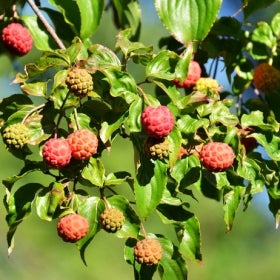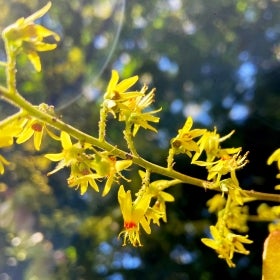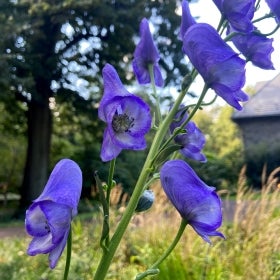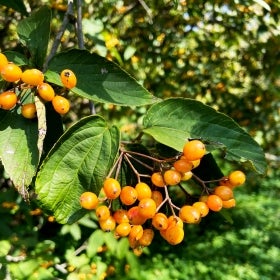What's in Bloom: September
September at the Morris
wood grass
Sorghastrum nutans
Meadows, Natural Areas
Found throughout the Natural Area meadows, this tall native grass blooms from late summer to fall, displaying bright yellow anthers that gently dangle from each grass spikelet.

kousa dogwood
Cornus kousa
Log Cabin
After its showy summer blooms, kousa dogwood’s red fruit become its fall seasonal interest. These soccer-ball-like fruits are considered drupes, like apricots and cherries, because they contain a stone in the center.
franklinia
Franklinia alatamaha
Azalea Meadow
A member of the tea family, Theaceae, this small tree blooms with cream-colored flowers and bright yellow stamens. John Bartram’s son collect seed of this species before it went extinct in the wild, and now this plant remains conserved at gardens and arboreta around the world.

Bourgainvillea golden-rain-tree
Koelreuteria bipinnata
Orange Balustrade/Parking Lot
This medium-sized tree boasts large panicles of small, bright yellow flowers with red centers. The species epithet refers to the bipinnately compound leaves, resulting in a feathery appearance.

monkshood
Aconitum sinomontanum
Widener Visitor Center
Native to China, this purple-flowering perennial brings color to shady garden areas. The form and arrangement of the petals resemble a hood, hence the common name.

Orangeberry tea viburnum
Viburnum setigerum ‘Aurantiacum’
Crabapple Slope
This species of viburnum typically displays showy red fruit in the fall, but this cultivar is selected for its yellow/orange fruit that persist through the season.